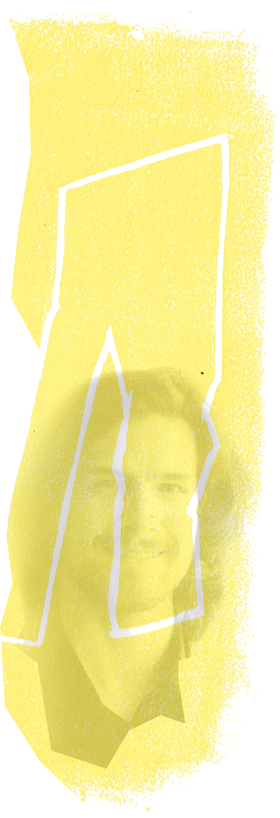Fritiof Palm (b. 1993) is a musician, composer and arranger residing in Malmö, Sweden, raised in a family of devoted amateur musicians. From an aesthetic perspective, he is an omnivore avidly exploring and questioning all sorts of artistic expressions that are subject to his exposure, considering his lack of stylistic residence a virtue.
He is musically active within a variety of constellations of different nature including solo violinist with Järfälla Symphony Orchestra, solo Thereminist with KTH Academic Orchestra, arranger and music manager at the Tullgarn Society’s (Tullgarnsällskapet) theatre association as well as composer for instrumentalists and ensembles of all sizes to mention a few.
Educated at Malmö Acedemy of Music in classical violin, supervised by Jörgen Svensson, and composition, supervised by Rolf Martinsson, at bachelor level with the latest degree in composition received in 2020, he is now continuing his studies in composition at Malmö Academy of Music, supervised by Bent Sørensen and Staffan Storm, at master level.
Gabriel Paiuk (*1975) is a composer and sound artist whose recent work is focused on the way notions, practices, and material aspects of sound mediation play a role in modulating our listening. His work takes the form of sound installations, compositions for instruments and electronics and collaborations with other disciplines.
In 2006 he won the Gaudeamus Composition Prize for his work Res Extensa – which was the first time a sound installation was awarded the prize. Recent works have been presented at Gallery W139, LI-MA and Sonic Acts Festival (Amsterdam), Universität Mozarteum (Salzburg) and the Willem Twee Kunstruimte-November Music Festival (Den Bosch). His ensemble and solo chamber work has been performed by Österreichisches Ensemble für Neue Musik, ASKO ensemble, Kammerensemble Neue Musik Berlin, Slagwerk Den Haag, Francesco Dillon, Ekkehard Windrich and Modelo62, among others. As a pianist-improviser he performed internationally and recorded together with musicians like Andrea Neumann, Axel Dörner, Jason Kahn, Keith Rowe, Burkhard Beins, Rhodri Davies, Gunter Mueller, Lucio Capece, Robin Hayward, Sergio Merce and others. Both his electronic and chamber works as well as his improvised music collaborations have been published in numerous labels internationally.
PAMELA ANGELA is a vibrant affair, a collaboration between composers Mia Ghabarou and Áslaug Magnúsdóttir. In their multifaceted approach to production, they draw on classical and electronic music, performance art and dramaturgy. PAMELA ANGELA’s live performance is as emotionally intrusive as it is ever evolving, giving new life to old songs and recurring melodies in alternating constellations of musicians and artists.
Áslaug holds a BA in electronic composition from Det Jyske Musikkonservatorium and Mia plans to graduate from the same program at the end of 2021. Both are based in Copenhagen.
Leevi Räsänen (b. 1997) is a Helsinki-based composer and composition pedagogue. His works include chamber, choral, vocal, orchestral and solo music and music for symphonic wind band. Sometimes they even get performed. Räsänen is part of the board of UNM Finland. ”Culture has played an exceptionally significant role in my family. I have been really privileged to be able to go to concerts, theatre, art exhibitions and opera since I was a child. In my childhood, the Savonlinna Opera Festival was the highlight of my summers. We drove to the opera from Enonkoski, where I’m from. My parents’ support for what was first for a musical hobby and later turned out to be a career has been the most important thing to me and without their unwavering support, truth be told, I’m not sure if I’d be alive, let alone at this point as a composer. During high school, I started suffering from serious mental illness that made me incapacitated. Along with other treatments, composing and playing were therapeutic for me. Nowadays I’m mostly doing well, but my artistic output still retains a kind of therapist’s role. My works are often related to being human, especially the human mind and emotions. I don’t have any musical paragons, as I often don’t think about music on a like/don’t like axis. All music turns out to be more interesting to me the better I understand it — and I try to think the same about other things in life as well.”

